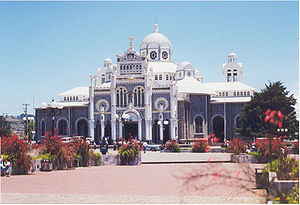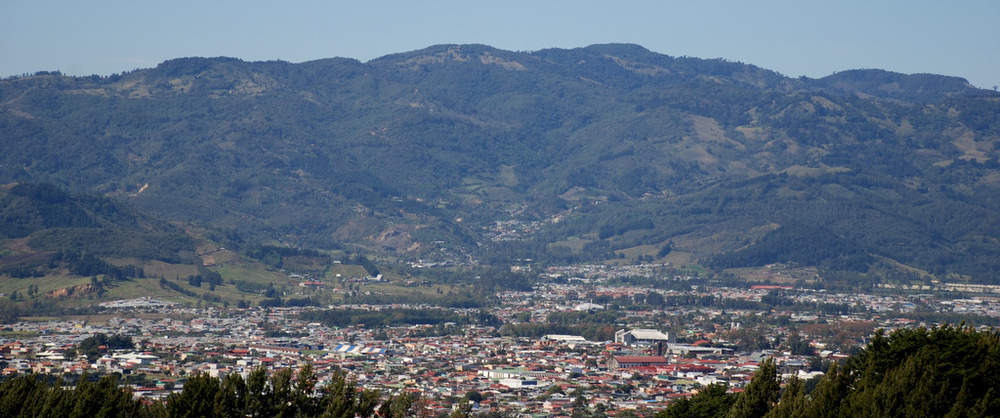Costa Rica, which means “rich coast” in Spanish, is a country filled with natural wonders. The nation is also known for luminaries like Nobel Peace Prize Winner Oscar Arias Sánchez and partypoker.es World Poker Tour Champion Jose Rosenkrantz. The latter catapulted into stardom due to his exceptional skill and discipline in local and international poker tournaments.
 The reminder of Costa Rica’s rich Hispanic heritage lies within its first Spanish colony called Cartago, established in 1563. It was once the country’s capital until 1823, when former president Juan Mora Fernandez decided to make San Jose the nation’s new capital. Cartago still contains the remains of the Spanish regime such as the churches built between 1563-1574. These ruins aged gracefully through time despite earthquakes and floods that occurred in the area. Fortunately, the Basilica of Our Lady of Angels remained intact through the years. This Byzantine style church is the country’s national shrine as Costa Rica is predominantly Catholic. Every 2nd of August, thousands of devotees flock the area to honor the black Virgin Mary or La Negrita’s appearance on the said area. Pilgrims continue to offer gifts to the said statue as it is believed to miraculously heal ailments.
The reminder of Costa Rica’s rich Hispanic heritage lies within its first Spanish colony called Cartago, established in 1563. It was once the country’s capital until 1823, when former president Juan Mora Fernandez decided to make San Jose the nation’s new capital. Cartago still contains the remains of the Spanish regime such as the churches built between 1563-1574. These ruins aged gracefully through time despite earthquakes and floods that occurred in the area. Fortunately, the Basilica of Our Lady of Angels remained intact through the years. This Byzantine style church is the country’s national shrine as Costa Rica is predominantly Catholic. Every 2nd of August, thousands of devotees flock the area to honor the black Virgin Mary or La Negrita’s appearance on the said area. Pilgrims continue to offer gifts to the said statue as it is believed to miraculously heal ailments.

Tourists who are nature-lovers can head off to Jardin Botanico Lankester. This massive botanical garden boasts of 11 hectares filled with 3,000 plant species. The garden was donated by the Stanley Smith Horticultural Trust and the American Orchid Society in 1973, to commemorate botanist Charles H. Lankester’s study of Costa Rica’s epiphytic plants. Areas of the botanical garden are divided into specific sections for different plant families like: Bamboos, Heliconias, Bromiliaceae (Bromeliads), Orchidaceae (Orchids), and Palmae (Palms). Different research programs in Biotechnology, Conservation Biology and Genetics, Pollination Biology, and Molecular Genetics, are catered as well within its confines.
 For those who are interested in Archeology, one can head off to the Guayabo National Park. It is an excavated village that existed between 400-1,400 A.D. Stone foundations where wooden houses once stood, can be seen along with paved drainage systems. This archeological site spans up to 49 acres, with humongous land mounds ranging from 30-100 feet in diameter. Another natural wonder that tourists can visit is the Irazú Volcano National Park. Its vast forest covers an area of about 2,300 hectares. The volcano itself contains 2 huge craters. The Diego de la Haya is the smaller creator, 300 feet deep. It contains a lake that magnificently changes from scarlet to green due to the water’s mineral content.
For those who are interested in Archeology, one can head off to the Guayabo National Park. It is an excavated village that existed between 400-1,400 A.D. Stone foundations where wooden houses once stood, can be seen along with paved drainage systems. This archeological site spans up to 49 acres, with humongous land mounds ranging from 30-100 feet in diameter. Another natural wonder that tourists can visit is the Irazú Volcano National Park. Its vast forest covers an area of about 2,300 hectares. The volcano itself contains 2 huge craters. The Diego de la Haya is the smaller creator, 300 feet deep. It contains a lake that magnificently changes from scarlet to green due to the water’s mineral content.
The city is brimming with natural wonders and amazing Hispanic history. Cartago’s beauty never fails to captivate tourists. It is truly one of Costa Rica’s hidden treasures.
